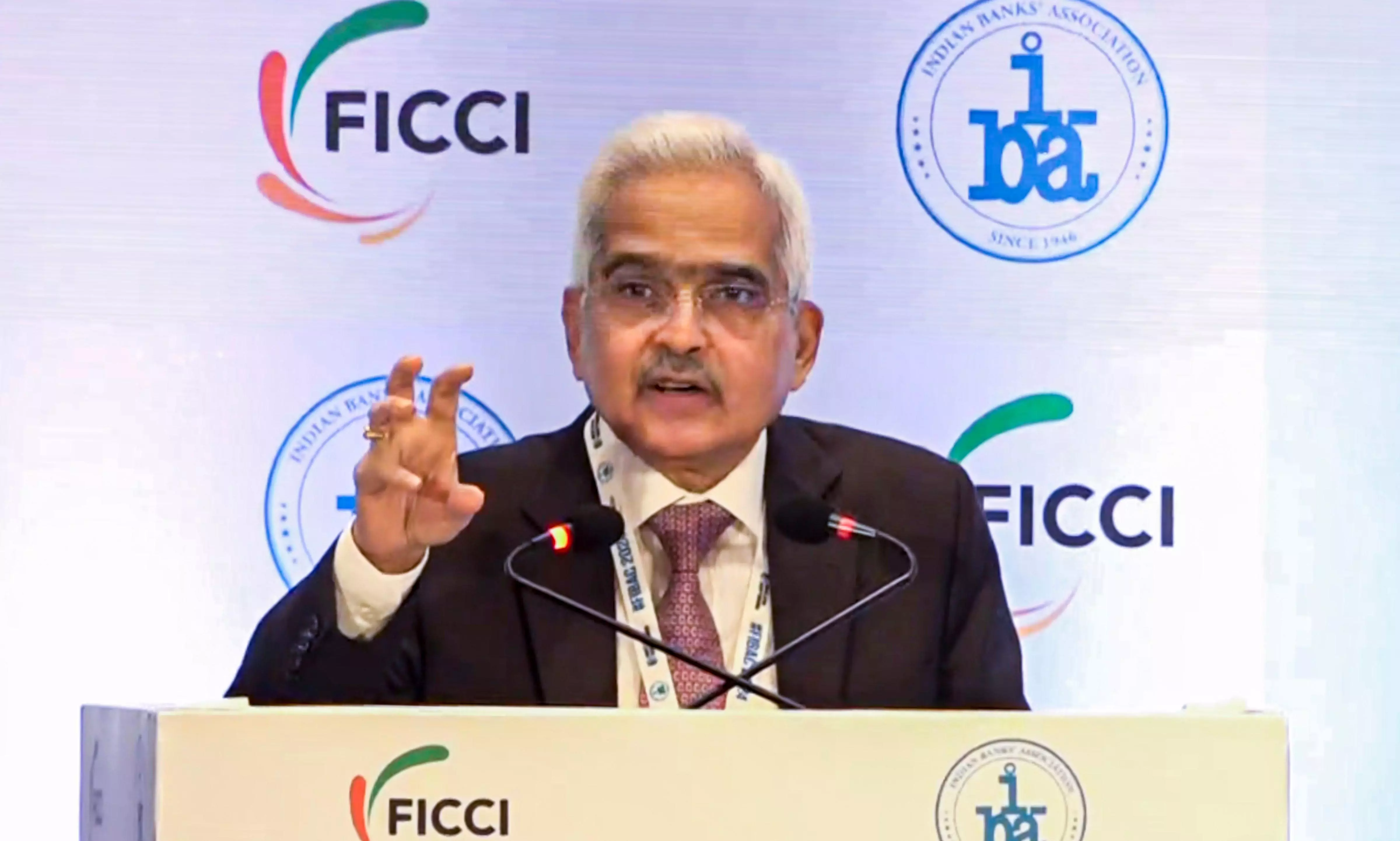India’s Growth Potential Is More Than 7.5% Says RBI Gov Das

Mumbai: The Reserve Bank of India (RBI) Governor Shaktikanta Das on Friday said that even as India’s Consumer Price Index Inflation (CPI) has softened into the tolerance band of 2-6 per cent, there is ‘still a distance to cover’ and that the central bank cannot afford to look the other way. Das also expressed confidence that the country has potential to grow at 7.5 per cent or more, a little above the central bank's full-year forecast for 2024-25 at 7.2 per cent with risks evenly balanced. Das also warned about the stress in the global commercial real estate (CRE) sector which needs to be watched closely.
Addressing Bretton Woods Committee’s Future of Finance Forum in Singapore Das said, “Inflation has moderated from its peak of 7.8 per cent in April 2022 into the tolerance band of +/- 2 per cent around the target of 4 per cent, but we still have a distance to cover and cannot afford to look the other way. The Reserve Bank’s projections indicate that inflation is likely to ease further from 5.4 per cent in 2023-24 to 4.5 per cent in 2024-25 and 4.1 per cent in 2025-26.”
A day earlier, official figures showed that CPI inflation inched upto 3.7 per cent in August from 3.6 per cent in July but remained below the RBI’s target of 4 per cent for the second straight month. While the base effect has been supportive since July mainly led by the food index, it somewhat faded in August causing the inflation rate to see a slight increase. Food inflation rose to 5.7 per cent in August from 5.4 per cent in July. On the other hand, Index of Industrial Production (IIP) recorded an uptick to 4.8 per cent on year in July from 4.7 per cent in June driven by a pickup in manufacturing output growth.
Das reiterated that the Indian economy has rebounded from the severe contraction imposed by the COVID-19 pandemic and averaged real GDP growth of above 8 per cent during 2021-24. He said that India’s potential growth rate was above 7.5 per cent, “but taking a more conservative position, I would like to say that it’s around 7 per cent.” India should be able to maintain that pace of growth in the next few years, he added.
Last quarter’s dip in growth to 6.7 per cent was largely due to weaker government spending during the elections, he said. “All the other drivers of growth, whether it is consumption, investment, or on the supply side, like agriculture, industry or services, all of them have recorded 7 per cent-plus growth in the first quarter” of the fiscal year, he added.
Highlighting the potential risks for global financial stability, Das stressed on the issue of banks' rising exposure to commercial real estate (CRE), proliferation of non-bank institutions in financial intermediation and rising debt service burdens and inflationary
pressure for emerging economies due to a stronger dollar. “Banks exhibit high sensitivity to expected and unexpected CRE losses, due to the relatively high CRE coverage ratios in their loan books. Further, liquidity squeezes can materialise for banks with large CRE exposures, as short sellers may target them and investor confidence may slip further. As I said earlier, staying alert and undertaking forward-looking regulatory measures ahead of the curve can contain the risks to bank balance sheets and systemic stability,” he said.

